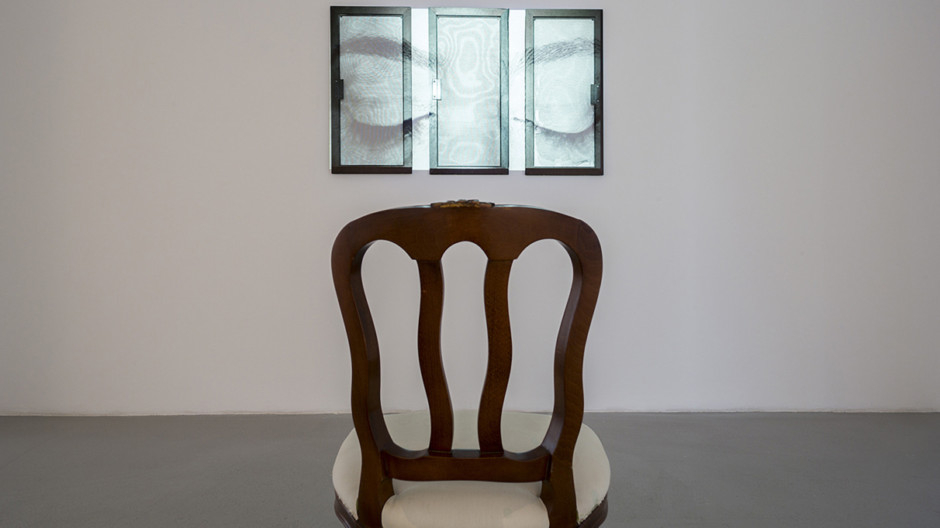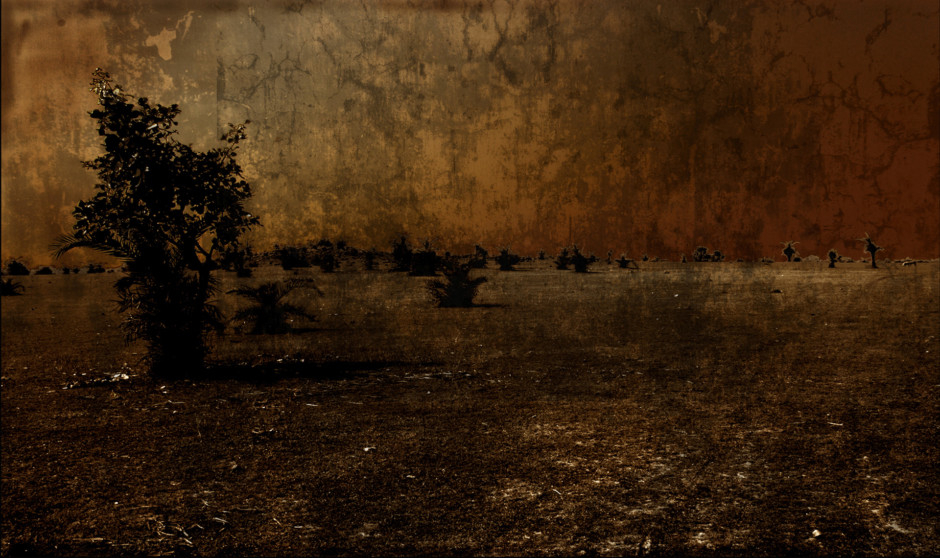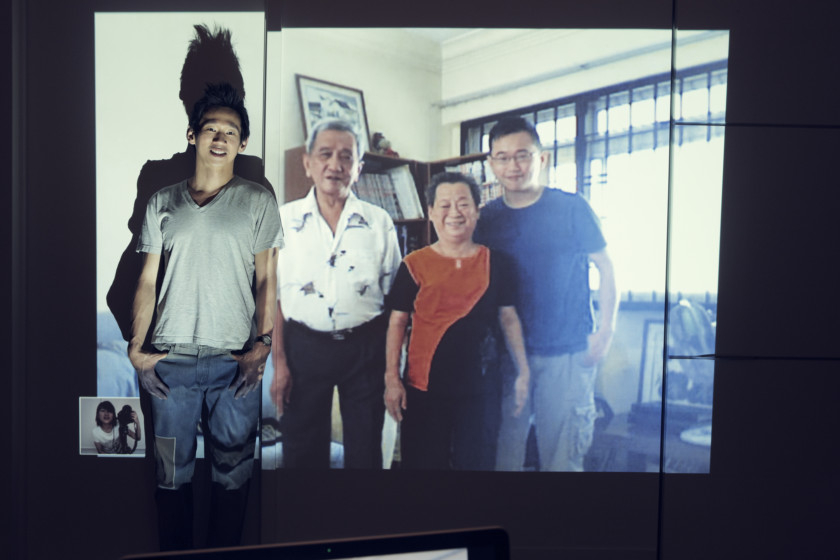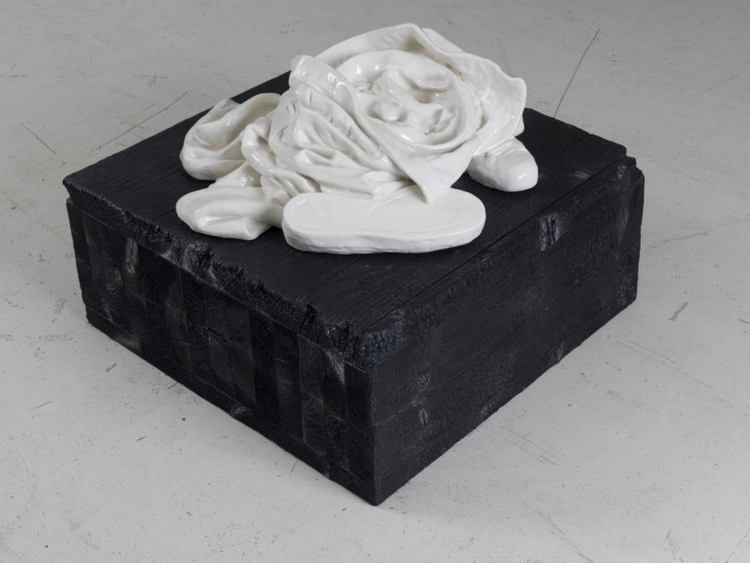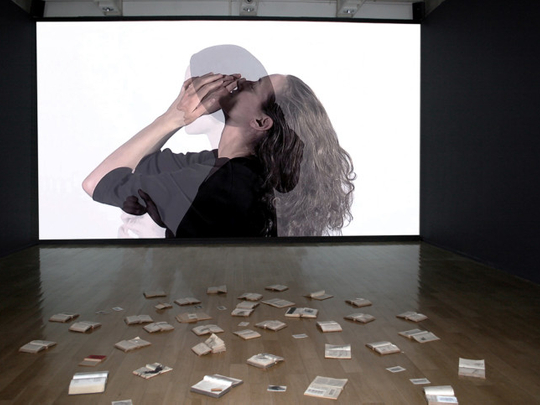
In a world where travel, migration and forced displacement are so prevalent, most people can relate to the idea of absence, of longing for people and places that reside within the layers of memory.
In the latest show at 1x1 Art Gallery, Poetics of Absence, curator Cristiana de Marchi explores the concept of absence and the stories and emotions associated with it, as well as the complexities of memory, through a variety of artworks by artists of various nationalities.
The works include faded photographs, hazy paintings, fragile sculptures, emotional videos and jewellery crafted from tears. Together they construct a multilayered narrative about presence that has become an absence and the preservation of that lost presence in memory.
Iraqi artists Nedim Kufi and Wafaa Bilal have both used photographs taken in Iraq but in very different ways. In Kufi’s Absence series, each work is a diptych where a childhood photograph of himself with his mother and siblings, taken in his home in Kufa, Iraq in the 1960s is juxtaposed with a copy of the same picture but with the artist missing.
The empty space created by his erased image is a powerful and painful reminder of the Amsterdam-based artist’s long absence and distance from home and of the sense of loss, despair and loneliness he constantly lives with.
In contrast, in his The Ashes series, Bilal began with media images of the destruction caused by war which has ripped open private, domestic spaces and made them public. In a defiant gesture against occupiers who want to strip people of their dignity and impose their own culture on them, he tried to make those homes intimate and re-domesticated by building miniature models of the places and photographing them.
People are absent from his photographs but the artist has spread 21 grams of human ashes mixed with other ashes on his model landscapes to represent the presence of the human spirit.
Lamia Joriege reflects on violence and loss and the modalities of memory in her The End Of series with hazy, layered, photomontages of post-war images of Lebanese landscapes she remembers. Similarly, Indian-French artist Chittrovanu Mazumdar’s photographic work and video from his Ancient Earth series, speak about yearning for a real or imagined land that exists deep in the layers of memory.
Germany-based Mohamad-Said Balbaaki expresses his traumatic childhood memories of fleeing with his family from Beirut in a series of paintings titled Heap. The missing humans in these emotional compositions are represented by the heaps of personal belongings left behind by them. Iranian Reza Aramesh’s fragile porcelain sculptures also depict a heap of clothes but these refer to the suffering of four Iraqis, who were reportedly forced to parade naked at gunpoint by American soldiers.
John Clang takes a positive and light-hearted approach to the theme by looking for a way to transform absence into presence. In his series Being Together, the New York-based Singaporean artist, made live webcam recordings of families in Singapore, then projected them via Skype into the homes of members of those families living overseas to create family portraits, virtually uniting families separated by time and space.
Japanese artist Tomoko Hayashi has found a unique way to visualise the fragility and preciousness of our memories. She looks at tears as a manifestation of our memories and emotions and invites people to recall intimate stories and collect their tears. She then crystallises the tears with sugar to make jewelry or candy, thus creating something tangible, yet fragile that she describes as a ‘five senses’ experience, for people to embrace their own feelings or to share them with their loved ones.
In a different take on the theme, Emirati artist Afra Bin Dhaher explores sleeping as a moment of absence of consciousness and dreams as a performative element through a video installation from her Hymns to a Sleeper project. UAE-based Tarek Al Ghoussein’s Windows on Work investigates the theme from a social angle with a series of photographs of buses that transport construction workers to their work sites. The traces of human presence seen through the windows of the empty buses such as a water bottle and the absence of the men make a powerful statement about people who contribute significantly to the country but are invisible in our society.
Emirati artist Alia Lootah investigates history through her blurred paintings based on images from the archives of the UAE army. In a reversal of Lootah’s process, Yusuf Nabil has hand painted prints of self-portraits taken while he was travelling alone. The images express the feelings of longing and displacement of the artist who has been living away from his birthplace Egypt for a long time and explore the role of photography in preserving memories.
The show also includes a film by Polish American artist Monika Weiss, titled Sustenazo (Lament). By combining emotional visuals and sounds referencing the best of German literature and painful memories of the holocaust, she weaves a layered narrative about the positive and negative aspects of European heritage and its connections with other regions and histories around the world. While enacting ancient gestures of lamentation, the work questions the absence of empathy and awareness of history in contemporary society as well as the choices we make about preserving memories of the past.
Poetics of Absence will run at 1x1 Art Gallery, Al Quoz until February 28.



